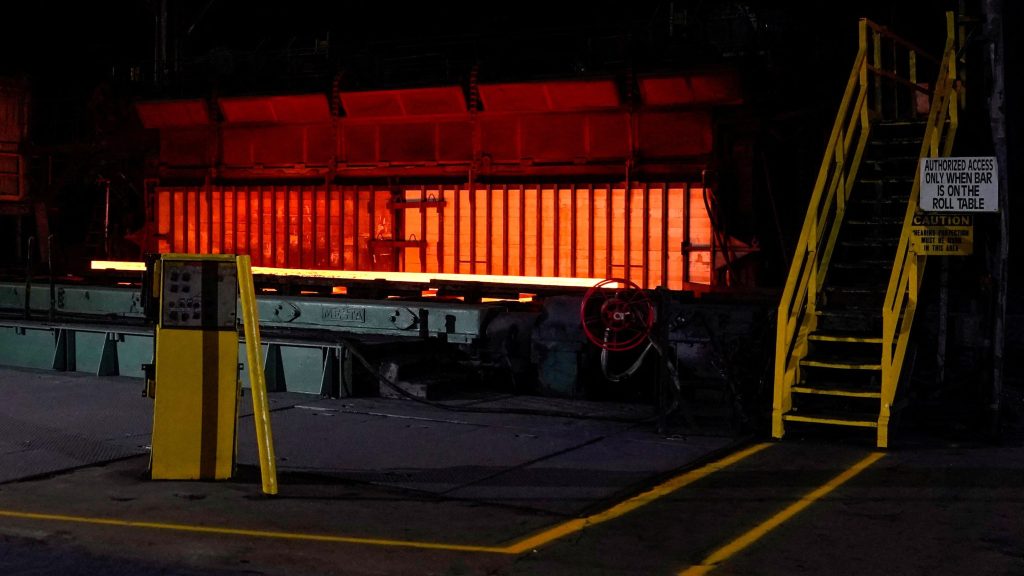EU, US ‘Green Steel’ Plan To Box Out China Stalls Ahead Of October Deadline

U.S.-European Union talks to create a ‘green steel’ trade deal that boxes out China have hit a wall as an Oct. 31 deadline looms that could bring back tariffs on billions of dollars of transatlantic trade, sources familiar with the negotiations on both sides of the Atlantic told Reuters.
U.S. negotiators are frustrated by what U.S. trade sources said is the EU’s lack of engagement on U.S. proposals in recent weeks. Deep disagreements remain over the structure of any joint trade curbs aimed at reducing carbon emissions and curbing excess production capacity, they said.
EU sources said the two sides have yet to agree on how to define “green steel” and expressed concern that U.S. proposals could flout global trade rules – by discriminating against third-party countries and possibly setting quantitative restrictions on imports.
The U.S. and EU launched the green metals talks in October 2021 after reaching a truce in their festering dispute over U.S. “Section 232” tariffs on global steel and aluminum imports imposed by former U.S. President Donald Trump
They gave themselves two years to negotiate the so-called Global Arrangement for Sustainable Steel and Aluminum, which aims to erect trade barriers in both the U.S. and EU against imports from plants with high-carbon emissions and countries producing far more steel than market demand warrants. The parameters are aimed at China, which produces half of the world’s steel.
However, progress in the talks was hampered by the long European summer vacation season and is so delayed that without a major breakthrough in coming weeks, the Oct. 31 deadline may come without any resolution, U.S. sources said.
“We’re in that critical phase now where it’s make or break,” one U.S. source said.
Missing the deadline could lead to reimposition of the U.S. tariffs of 25% on steel and 10% on aluminum from EU producers – along with a snap-back of EU retaliatory duties on U.S. products ranging from Harley-Davidson motorcycles to blue jeans. Trump imposed the metals tariffs globally in 2018 under “Section 232” of a 1962 trade law that allows the president to restrict imports if they are threatening national security.
WTO, CARBON WORRIES
The EU and U.S. agreed to remove the Section 232 tariffs, which an adjudicating panel of the World Trade Organization found last year breached global rules.
EU negotiators have been reluctant to embrace U.S. proposals to impose barriers to steel and aluminum from countries that maintain excess production capacity beyond what the market can absorb, which the U.S. sources said are critical to replacing the Section 232 tariffs and still protecting U.S. producers.
European negotiators also have rejected a simple tariff mechanism to exclude steel and aluminum from high-carbon producers, instead favoring the more complex Carbon Border Adjustment Mechanism (CBAM), a new EU regulation that aims to standardize carbon pricing and require companies to purchase credits for the carbon-intensive goods they import, a U.S. source said.
The EU says the CBAM is designed specifically to comply with WTO rules.
Taking up CBAM requirements would require the U.S. to adopt a similar mechanism, a political non-starter in the closely balanced U.S. Congress, where Republicans are pushing back on climate change measures, and Republicans and Democrats have balked at forcing U.S. companies to adopt global standards.
The European Commission said any solution must be compliant with WTO rules and the EU’s climate policies, and that the CBAM is its key climate and trade plan.
EU sources said its negotiators are concerned that U.S. proposals, which could require it to impose tariffs on steel made outside a “climate club” of countries, will not comply with WTO rules against discrimination.
ELECTION COMPLICATIONS
Extending the deadline would cause the talks to bleed into the contentious 2024 election year, making a deal more difficult to achieve amid strong sentiment for maintaining tariffs.
The EU also holds parliamentary elections in 2024 that could shift trade sentiment.
A spokesperson for U.S. Trade Representative Katherine Tai’s office declined to comment on the talks.
The European Commission said both sides were fully committed to reaching an ambitious agreement by October and that the EU team was fully engaged.
“That’s the deadline towards which we are working, and I think it’s still within reach to deliver by that deadline,” EU trade chief Valdis Dombrovskis told a hearing in Brussels on Wednesday, adding that a permanent lifting of the Section 232 tariffs against the EU was vital.
(Reporting by David Lawder and Philip Blenkinsop; Editing by Heather Timmons and Paul Simao)




